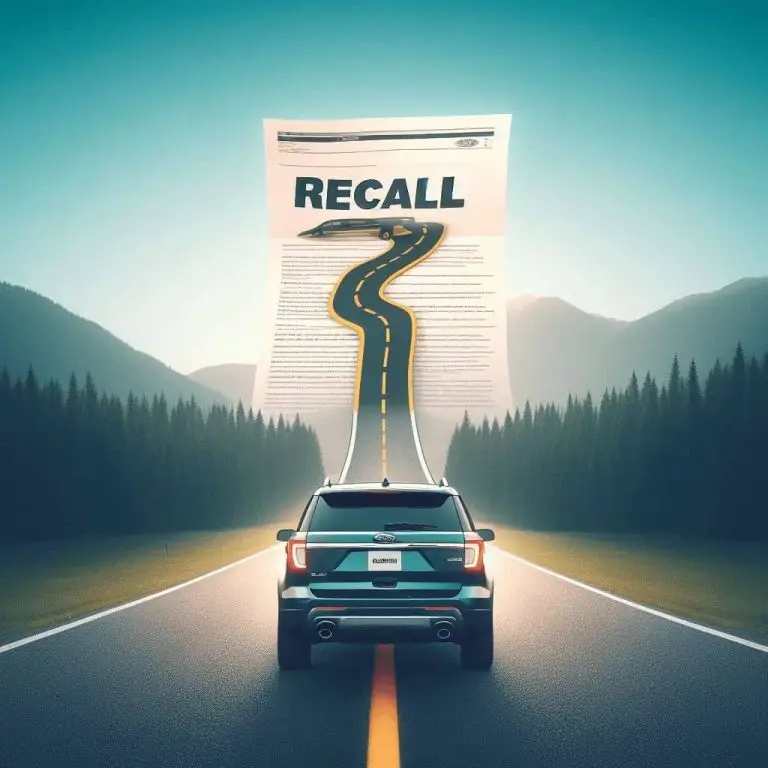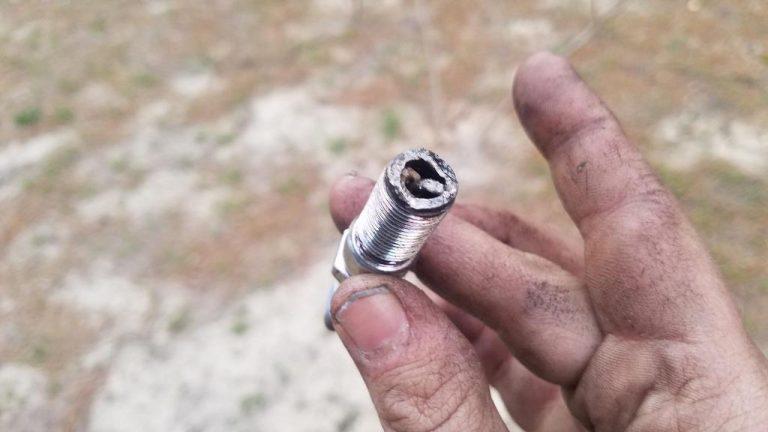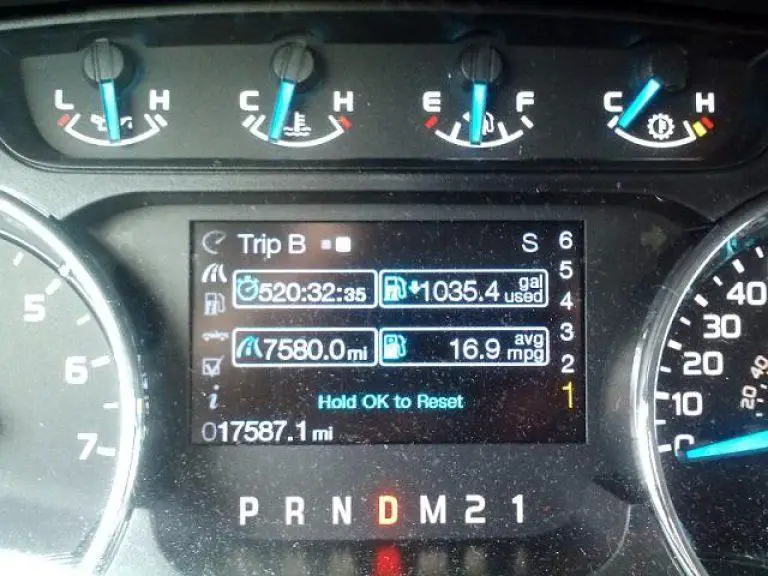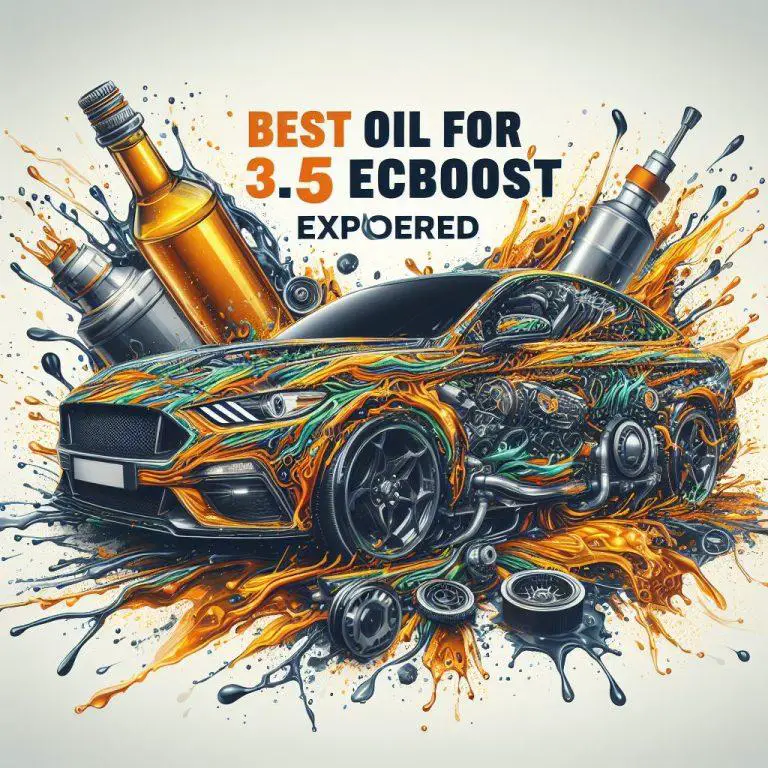Ford F150 Auto Start Stop Problems? Expert Solutions Inside!
The Ford F-150 auto start-stop feature is a fuel-saving technology that turns off the engine when the vehicle comes to a complete stop and restarts it when the driver releases the brake pedal. However, this feature has been known to experience a number of problems, including stalling, rough idling, slow restart, and premature battery wear.
Are you facing issues with the Ford F-150 auto start-stop feature? You’re not alone. This fuel-saving technology, while designed to enhance efficiency, has stirred up its fair share of problems. In this guide, we dive deep into:
- Common problems linked to the auto start-stop function.
- Specific scenarios and their fixes.
- Expert advice on managing these issues.
- Recommendations for those grappling with persistent problems.
Stay with us as we unravel the intricacies of the Ford F-150’s auto start-stop system and provide solutions to keep your drive smooth.
Common Problems with Ford F-150 Auto Start-Stop Feature
A quick overview: The Ford F-150, a stalwart in the pickup truck world, offers advanced features like auto start-stop. However, with innovation comes a few hiccups. Here, we delve into the common issues and their explanations.
Problem #1: Stalling
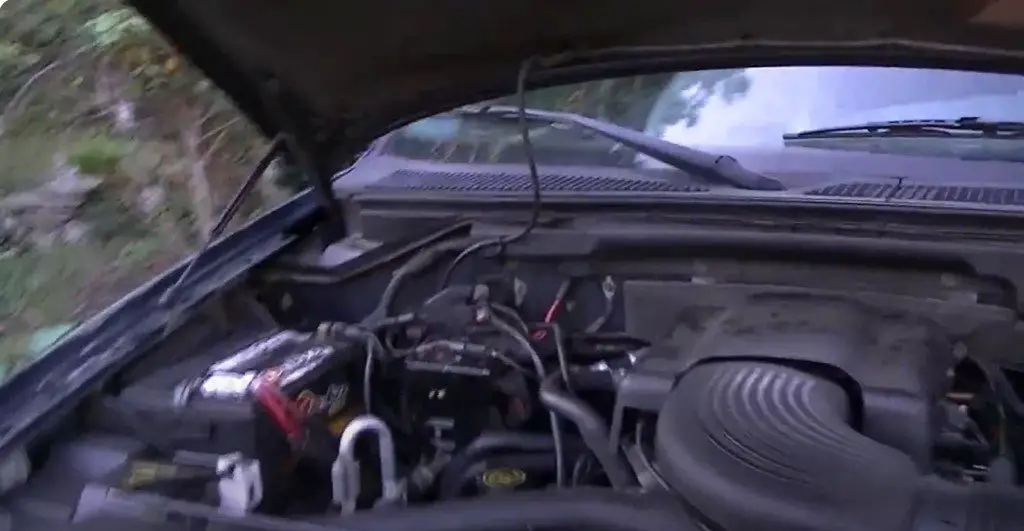
Stalling, in the context of the Ford F-150’s auto start-stop feature, refers to the unexpected cessation of the engine’s operation.
Engine Stalling During Auto Start-Stop Activation
When the auto start-stop feature activates, particularly in city traffic or during short stops, the engine might unexpectedly cease to function. This interrupts the driving experience, especially when immediate acceleration is needed.
Instances of Stalling on Slopes and in Hot Weather
Driving conditions significantly affect the auto start-stop functionality. Slopes challenge the system due to gravitational pull, and high temperatures can affect engine fluidity. Under such conditions, the system might falter, leading to engine stalls.
Elevated terrains and scorching temperatures can exacerbate the stalling problem, leading to uncomfortable and sometimes risky situations.
| Condition | Frequency of Stalling |
| Flat Terrain | Low |
| Slopes | Moderate to High |
| Hot Weather | High |
Problem #2: Rough Idling
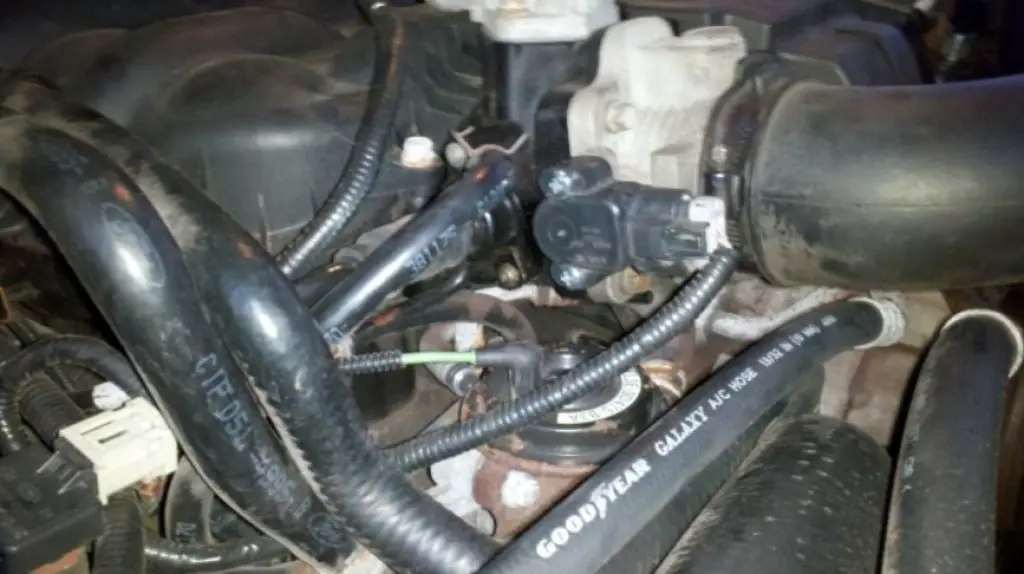
Rough idling refers to uneven engine vibrations when the vehicle is stationary but the engine is running.
Explanation of Engine Vibration During Activation
As the auto start-stop system kicks in, the vehicle might experience abnormal engine tremors. This is more than just a discomfort—it could hint at underlying issues, from fuel injector problems to worn spark plugs.
Problem #3: Slow Restart
A hallmark of the Ford F-150’s auto start-stop feature is its swift transition. However, this isn’t always the case.
Delays in Engine Restart After Activation
Occasionally, after the engine shuts down due to the feature, drivers might experience hesitations or delays during restarts. This lag can be problematic, especially during quick traffic maneuvers.
Problem #4: Premature Battery Wear
The frequent stopping and starting of the engine can strain the vehicle’s battery.
Impact of Auto Start-Stop on Battery Lifespan
With every engine restart, the battery exerts energy. Over time, with the recurrent use of the auto start-stop feature, this can lead to a faster depletion of the battery’s life cycle, necessitating premature replacements.
Warning: To ensure consistent performance, it’s vital to maintain the battery’s health with regular check-ups and timely replacements.
Other Notable Issues
The Ford F-150’s auto start-stop system, while advanced, is not devoid of glitches.
System Inconsistencies
At times, the system might showcase erratic behavior, activating when unnecessary or failing to activate when required.
Unexpected System Disabling
In some scenarios, without any evident triggers, the system might deactivate itself, perplexing the driver.
Dashboard Warning Lights
Intermittently, the system might cause certain dashboard lights to illuminate. While it might just be a minor glitch, it’s always safer to get it diagnosed.
Note: Dashboard lights are the vehicle’s way of communicating potential issues. It’s always recommended to address them promptly.
Specific Scenarios and Solutions
Navigating the world of modern vehicle technology can be both exciting and daunting. The Ford F-150’s auto start-stop feature, designed to enhance efficiency and reduce fuel consumption, is no exception. While many users reap its benefits, some face unique challenges that disrupt their driving experience. In this section, we delve into specific scenarios where the auto start-stop system might falter and provide tailored solutions to address them.
Mid-Traffic Stalling
The Ford F-150’s auto start-stop feature, while innovative, occasionally poses challenges during mid-traffic scenarios.
Disconnecting the Dash Connector
One way to address unexpected mid-traffic stalling is by temporarily disconnecting the dash connector. This can often reset the system and rectify any anomalies.
Importance of Checking the Gas Tank
A surprisingly common oversight that can cause stalling is running on a near-empty gas tank. Before attributing stalls to system failures, it’s essential to check the fuel gauge.
Sudden Power Loss
A sudden loss of power during a drive can be both startling and dangerous, especially during high-speed maneuvers.
Understanding Brake-Related Power Loss
One of the triggers for the auto start-stop feature is the brake. However, a slight tap can sometimes inadvertently activate the system, leading to unexpected power losses.
Reference to Speedometer Triggers
The auto start-stop system is designed to activate at specific speed thresholds. Understanding these triggers can help in anticipating and managing potential power losses.
Restart Failure
Nothing can be more frustrating than a vehicle refusing to restart, especially in time-sensitive situations.
Inspection of the Auto Start-Stop Button
If you’re facing repeated restart failures, the culprit might be the auto start-stop button itself. A quick inspection can often reveal if it’s malfunctioning.
Benefits of Using an Auto Start/Stop Eliminator
For those consistently struggling with the auto start-stop system, investing in an Auto Start/Stop Eliminator can be a viable solution. This device effectively bypasses the system, preventing unintentional activations.
Weird Warnings
Modern vehicles, with their intricate electronic systems, sometimes display peculiar warning signals.
Usage of OBD Tools for Dashboard Errors
On-Board Diagnostic (OBD) tools are invaluable for diagnosing and interpreting dashboard error messages. These devices can provide insights into the underlying issues causing the warnings.
Conflicts with Other Functionalities
Sometimes, the auto start-stop system might conflict with other vehicle features, like the towing mode. Being aware of these potential conflicts can help in troubleshooting and preventing them.
Battery Drain Concerns
The advanced systems in modern vehicles, while enhancing functionality, often come at the cost of increased energy consumption. Among these, the auto start-stop feature of the Ford F-150 is a significant contributor to battery drain concerns.
Highlighting the Battery’s Excessive Drain
The frequent stopping and starting of the engine, while designed to save fuel, can inadvertently place an undue burden on the battery. Each activation requires energy, leading to faster depletion of the battery’s charge, especially if the vehicle isn’t run for extended periods to allow the battery to recharge.
Implications for Frequent Short Trips
For those who primarily engage in short commutes or city drives, the auto start-stop system can be particularly taxing. Short trips often don’t provide the battery with enough time to recharge fully, leading to gradual wear and reduced battery lifespan.
Technical Service Bulletins (TSBs)
Ford, recognizing the challenges posed by the auto start-stop system, has proactively worked towards providing solutions and clarifications through Technical Service Bulletins (TSBs).
Mention of Ford’s Efforts to Address Issues
Ford’s commitment to enhancing the driving experience is evident through its release of TSBs. These bulletins provide dealerships and mechanics with insights into common problems and their potential solutions.
Reference to Specific TSBs like TSB 21-2212
Among the many TSBs released, TSB 21-2212 specifically addresses issues related to the auto start-stop system’s stalling problems. This bulletin provides detailed diagnostic procedures and potential solutions to address these concerns.
Addressing the Effectiveness of TSBs Based on Owner Feedback
While TSBs serve as a valuable resource, their effectiveness can vary. Some Ford F-150 owners have reported improvements after the recommended fixes, while others still face challenges. It’s essential to consider owner feedback and personal experiences when evaluating the potential benefits of implementing TSB recommendations.
How to Manage Auto Start-Stop Issues
The auto start-stop feature in the Ford F-150, while designed for efficiency, can sometimes pose challenges to drivers. Whether it’s unexpected stalling or battery drainage, the system isn’t without its quirks. Fortunately, there are ways to manage these issues, ranging from temporary solutions to more permanent fixes.
Temporary Disabling
For those who occasionally find the auto start-stop feature inconvenient or disruptive, there are ways to disable it temporarily.
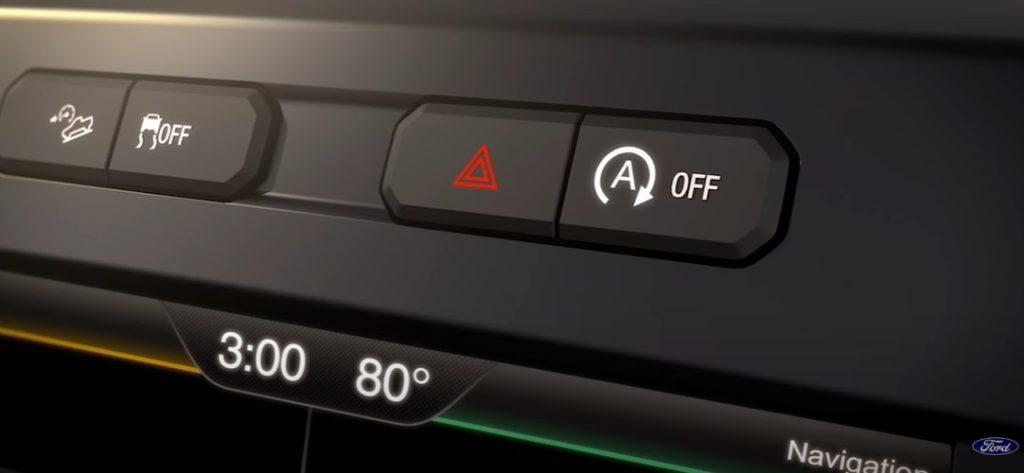
Using the Auto Start-Stop Button for Temporary Relief
The easiest method to disable the feature momentarily is by pressing the auto start-stop button located on the vehicle’s dashboard. This offers drivers an immediate respite from the system, especially during specific driving conditions where the feature might be more of a hindrance than a help.
Auto Re-Enablement Upon Vehicle Restart
It’s important to remember that the temporary disabling method isn’t a permanent solution. Once the vehicle is restarted, the auto start-stop system will automatically reactivate. This ensures that drivers always have the energy-saving benefits of the feature at their disposal, should they choose to use it.
Permanent Disabling
For those looking for a more long-term solution, permanently disabling the feature is an option. However, this route comes with its considerations.
Seeking Assistance from a Ford Dealer
To permanently disable the auto start-stop system, one would need to visit a Ford dealership. Trained professionals can reprogram or adjust the system to ensure it remains inactive, offering drivers a continuous drive without interruptions from the feature.
Warranty Considerations with Permanent Disabling
A crucial factor to bear in mind is the vehicle’s warranty. Some modifications, including the permanent disabling of certain features, might void the vehicle’s warranty or specific parts of it. Before proceeding with any permanent changes, it’s essential to discuss potential implications with the dealership and understand the ramifications.
Could Auto Start Stop Problems be Causing My Ecoboost to Have Bad Gas Mileage?
Could auto start-stop problems be causing my Ecoboost to have bad gas mileage? Many owners of Ecoboost engines have reported experiencing bad gas mileage in Ecoboost vehicles. While auto start-stop technology is designed to save fuel by shutting off the engine when the vehicle comes to a complete stop, it can also contribute to decreased fuel efficiency if there are issues with the system. If you are experiencing bad gas mileage in your Ecoboost, it might be worth checking if there are any problems with the auto start-stop feature.
Do Ignition Coil Resistance Specifications Affect the Auto Start Stop Function in Ford F150?
The ford ignition coil resistance specs play a crucial role in the auto start-stop function of the Ford F150. These specifications directly impact the ignition coil’s ability to regulate the electrical current, ensuring optimal performance. Meeting the required resistance specifications ensures smooth operation of the auto start-stop feature, enhancing the overall efficiency of the vehicle.
Maintenance and Care Tips
Every technological feature in a vehicle, including the auto start-stop system in the Ford F-150, requires adequate maintenance and care to ensure optimum performance. Proper upkeep not only prolongs the life of the system but also enhances the overall driving experience.
Importance of a Healthy Battery and Charging System
At the heart of the auto start-stop system is the vehicle’s battery. The frequent stopping and starting can strain the battery, making its health paramount for the smooth functioning of the feature. Regularly monitoring the battery’s charge, ensuring clean connections, and replacing it when signs of wear are apparent are vital steps.
Recommendations for Auto Start-Stop Usage in Specific Conditions
Certain conditions can challenge the auto start-stop system more than others. For instance:
- Hot Weather: High temperatures can affect battery performance. During scorching days, consider limiting the use of the auto start-stop feature to prevent potential battery strain.
- Towing: When towing heavy loads, the added weight can strain the engine and battery. It might be advisable to disable the auto start-stop system in such situations to ensure consistent power delivery.
Seeking Professional Diagnosis and Repair for Persistent Issues
If the auto start-stop system consistently malfunctions or shows signs of irregularities, it’s crucial to seek professional help. Early diagnosis can prevent minor issues from escalating into significant problems.
How can the Camshaft Position Sensor Location affect the Auto Start Stop feature on a Ford F150?
The ford f150 camshaft position sensor location plays a crucial role in the functioning of the Auto Start Stop feature. Positioned near the engine’s timing belt or chain, the sensor detects the camshaft’s rotational position, allowing the system to accurately control when the engine shuts off and restarts during idle periods. A properly placed sensor ensures seamless operation, while incorrect placement may result in malfunctioning or unreliable Auto Start Stop functionality.
Recommendation
Navigating the intricacies of modern vehicle systems, especially something as nuanced as the auto start-stop feature, can be challenging. While maintenance and care tips provide guidance, certain issues might require expert intervention.
Emphasizing the Importance of Professional Diagnosis
While some auto start-stop challenges can be managed with quick fixes, underlying problems might persist. Professional diagnostics offer a thorough examination, ensuring that every aspect of the system is functioning as it should.
Recommendations for Visiting a Ford Dealer for Problem Resolution
For specific challenges, especially those related to software or intricate mechanics, visiting a Ford dealer is the best course of action. Their technicians are trained to handle model-specific issues, ensuring accurate solutions.
In conclusion, while the Ford F-150’s auto start-stop feature is a testament to modern automotive innovation, it’s not without its challenges. Addressing the “Ford F150 auto start-stop problems” requires a blend of regular maintenance, awareness of driving conditions, and professional insights. By staying informed and proactive, Ford F-150 owners can enjoy the benefits of this feature while mitigating potential issues. Safe driving!
Read Also: Why is My F150 Getting Bad Gas Mileage
Here are some FAQs about “Ford F150 auto start-stop problems”:
What is the purpose of the auto start-stop feature in the Ford F-150?
The auto start-stop feature is designed to save fuel by automatically turning off the engine when the vehicle comes to a complete stop and restarting it when the driver releases the brake pedal.
Why is my Ford F-150’s auto start-stop system not working properly?
There could be various reasons, including a weak battery, malfunctioning sensors, or software issues. It’s best to consult with a Ford dealer for a precise diagnosis.
Can I permanently disable the auto start-stop feature on my Ford F-150?
Yes, you can seek assistance from a Ford dealer to disable the feature. However, doing so might void certain parts of your vehicle’s warranty.
Are there any common problems associated with the Ford F-150 auto start-stop system?
Some owners have reported issues like stalling, rough idling, slow restarts, and premature battery wear, among others.


